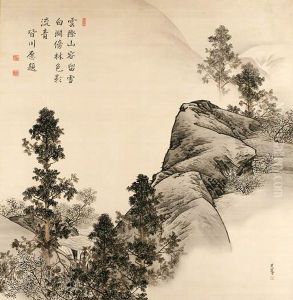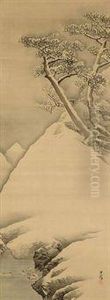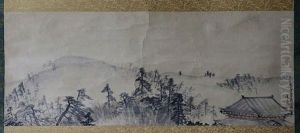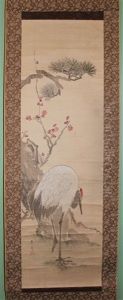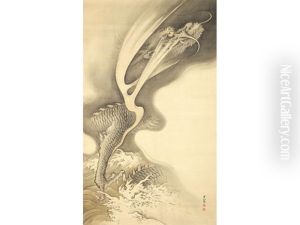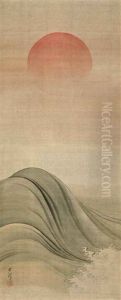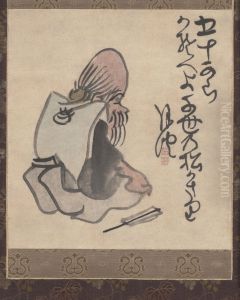Matsumura Goshun Paintings
Matsumura Goshun was a Japanese painter of the Edo period, born in 1752 in Kyoto, Japan. He is often associated with the Shijō school of painting, yet his artistic journey began under the tutelage of a different tradition. Initially, Goshun sought to learn the ways of the Kanō school, the leading style of painting at the time, known for its bold, linear, and powerful forms that catered to the tastes and demands of the warrior class and aristocracy. However, his artistic direction took a significant turn after he became a disciple of Yosa Buson, a renowned master of the literati style painting (Nanga or Bunjinga) and one of the great haiku poets of the Edo period. This pivotal meeting would deeply influence Goshun's artistic path, infusing his work with the delicate sensibilities and natural motifs characteristic of the literati tradition.
Goshun's style is marked by a unique blend of the Maruyama-Shijō school's naturalism with the poetic and expressive qualities of Buson's literati painting. This synthesis led to the creation of works that were both visually appealing and deeply reflective of the natural world, embodying the essence of the Japanese aesthetic and philosophical concept of wabi-sabi, which finds beauty in simplicity, impermanence, and imperfection. Goshun's paintings often feature landscapes, flowers, and birds, executed with a gentle and refined touch, demonstrating his mastery in capturing the transient beauty of nature.
In 1787, after the death of Buson, Goshun founded his own school, which came to be known as the Shijō school, named after the street in Kyoto where he lived. This school further developed the style that Goshun had pioneered, combining the Maruyama school's skilled realism with the literati's more expressive and poetic approach to painting. Through his work and teaching, Goshun played a pivotal role in the evolution of Japanese painting, bridging the gap between the dominant styles of his time and fostering a new direction that would influence generations of artists to come.
Goshun's legacy is that of an innovator who, while deeply rooted in the traditions of his predecessors, was not afraid to chart his own artistic course. His ability to harmonize differing stylistic elements into a cohesive and distinctive style has earned him a place among the most esteemed painters of the Edo period. Matsumura Goshun passed away in 1811, leaving behind a body of work that continues to be celebrated for its elegance, simplicity, and profound beauty.
